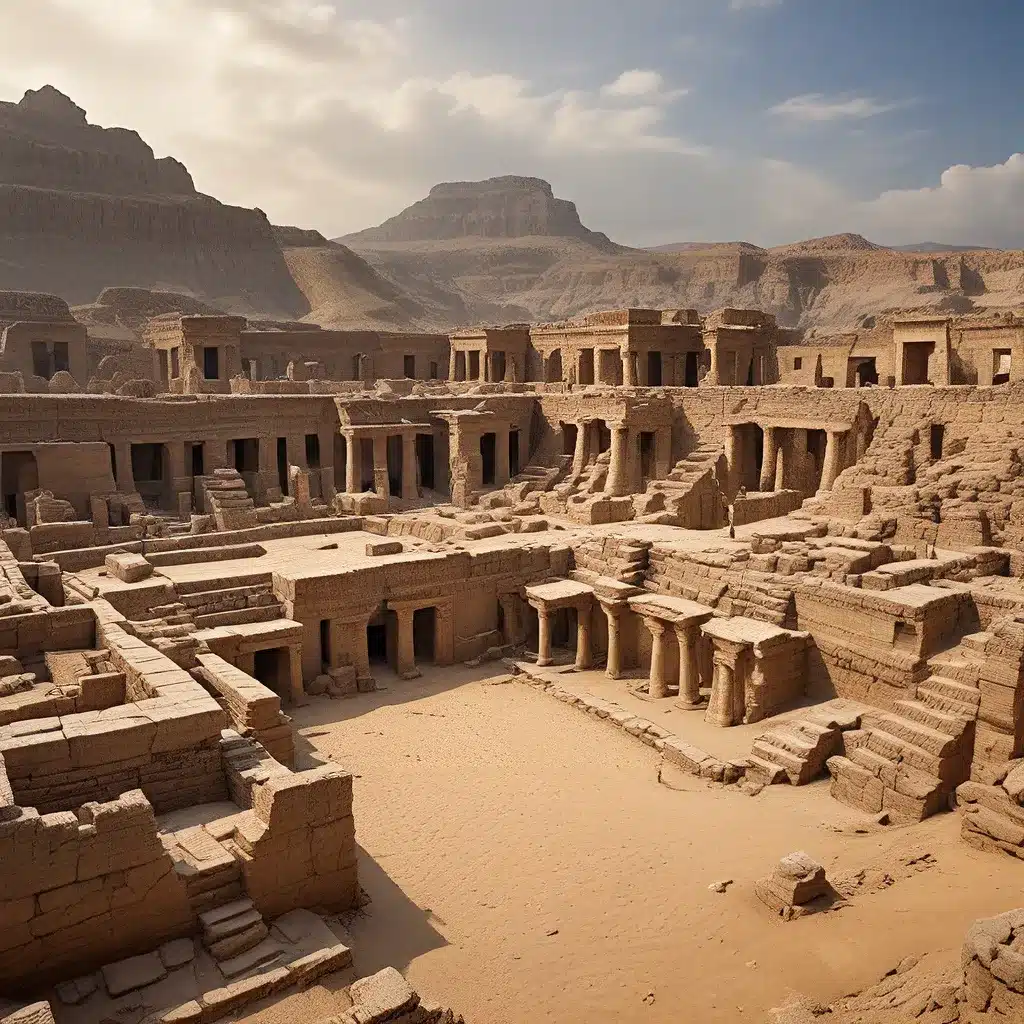
Humanity’s fascination with the lost civilizations of the past has captivated our collective imagination for centuries. From the majestic ruins of Machu Picchu to the enigmatic Moai statues of Easter Island, our world is dotted with the remnants of once-thriving cultures that have long since vanished. In recent decades, advancements in technology have unlocked new avenues for exploring these ancient mysteries, shedding light on the intricate tapestry of our shared history.
Revealing the Hidden Silk Road
One such remarkable discovery has come from the use of spy satellite imagery to uncover the lost outposts and vanished empires of the historic Silk Road. This vast network of trade routes, which once connected the East and the West, was the lifeblood of countless civilizations for centuries. However, the conventional wisdom held that these caravan routes and their associated empires had declined after the rise of sea-based trade in the 15th and 16th centuries.
Recent research, funded by a $2 million grant from the U.S. State Department, has challenged this assumption. By analyzing decades of satellite imagery, researchers have uncovered a treasure trove of archaeological sites that paint a very different picture of the Silk Road’s enduring legacy.
Among the most striking discoveries are the massive caravanserai, or way stations, that dot the ancient trade routes. These sprawling mud-brick complexes, capable of housing hundreds of people and their livestock, were strategically placed every 12 miles (20 kilometers) – the distance a caravan could travel in a single day before needing to rest. These findings suggest that the Silk Road trade routes continued to thrive long after the conventional wisdom had assumed their decline.
Uncovering Subterranean Canals and Religious Diversity
The satellite imagery has also revealed other hidden wonders of the ancient world, including intricate subterranean canals that were likely built during the Parthian Empire to support agricultural activities in the region. These canals, buried by the sands of time, are a testament to the engineering prowess of long-lost civilizations.
Furthermore, the imagery has shed light on the remarkable religious diversity that once flourished in the heart of the Silk Road. From Zoroastrian fire temples to Buddhist stupas, the archaeological sites uncovered by this project reveal a vibrant tapestry of faiths that coexisted and interacted within these ancient trade networks.
Preserving the Past for the Future
The significance of these discoveries cannot be overstated. As David Thomas, an archaeologist at La Trobe University in Melbourne, Australia, noted, “Only when these sites are recorded can they be studied and protected.” The use of remote sensing technology, such as satellite imagery, has enabled researchers to safely explore these regions, which are often too dangerous to access on the ground due to political instability and the ongoing threat of conflict.
By documenting and preserving these archaeological wonders, we can not only deepen our understanding of the past but also safeguard these fragile remnants of our shared human heritage. As the world continues to change, it is crucial that we make every effort to uncover and protect the lost empires of the ancients, ensuring that their stories and legacies are not forgotten.
Exploring the Frontiers of Ancient Civilizations
The search for lost civilizations and ancient mysteries has captivated the human imagination for centuries, inspiring countless works of fiction and fueling a deep fascination with the secrets of the past. From the mythical city of Atlantis to the legendary lost city of the Incas, the allure of these vanished worlds has inspired generations of explorers, archaeologists, and armchair adventurers alike.
Films such as “Castle in the Sky,” “Children Who Chase Lost Voices,” and “Atlantis the Lost Empire” have tapped into this universal curiosity, inviting audiences to embark on fantastical journeys to uncover the secrets of long-lost civilizations. Similarly, science fiction novels like “2001: A Space Odyssey,” “Rendezvous with Rama,” and the “Hyperion” series have explored the themes of ancient, mysterious structures and the remnants of alien cultures, captivating readers with their imaginative explorations of the unknown.
Uncovering the Mysteries of the Past
As technology continues to advance, the potential for unlocking the secrets of the past has never been greater. From the use of advanced imaging techniques to the application of cutting-edge analytical methods, archaeologists and historians are constantly pushing the boundaries of what we know about the ancient world.
Whether it’s the discovery of a Bronze Age burial chamber on the English moors or the unearthing of a 1,000-year-old elite woman’s silk cloak in an abandoned fortress in Mongolia, these remarkable finds remind us that there are still countless untold stories waiting to be uncovered.
As we continue to explore the frontiers of human civilization, we must remain vigilant in our efforts to preserve and protect these fragile remnants of the past. By doing so, we not only deepen our understanding of our shared history but also inspire future generations to continue the search for the lost empires of the ancients.


